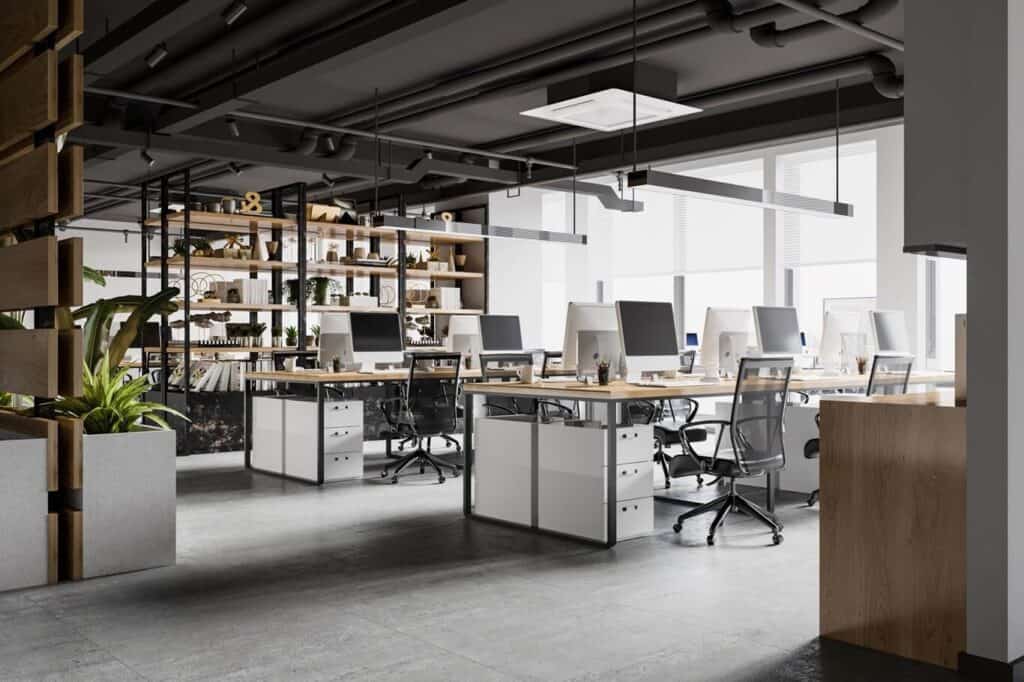Crafting the Perfect Office Interior Design to Boost Productivity
Share this:

Embark on a journey through the world of office interior design, where every detail plays a crucial role in shaping the work environment. From enhancing productivity to fostering employee well-being, the impact of a thoughtfully designed office space is undeniable.
Delve into the realm of office interior design, where creativity meets functionality to create spaces that inspire and elevate work performance.
Importance of Office Interior Design
Office interior design plays a crucial role in enhancing productivity and promoting employee well-being. A thoughtfully designed workspace can have a significant impact on work performance and overall satisfaction.Enhanced Productivity
Well-designed office spaces are known to boost productivity among employees. By creating an environment that is both functional and aesthetically pleasing, workers are more motivated and focused on their tasks. For example, incorporating natural light, ergonomic furniture, and designated collaboration areas can lead to increased efficiency and creativity in the workplace.Employee Well-Being
Employee well-being is directly linked to the design of the office environment. Factors such as proper ventilation, comfortable seating, and access to greenery can contribute to a healthier and happier workforce. Studies have shown that employees in well-designed offices tend to experience lower stress levels and higher job satisfaction, leading to reduced absenteeism and improved overall well-being.Elements of Effective Office Interior Design
Creating a functional and aesthetically pleasing office environment involves incorporating key elements that enhance productivity and well-being.Role of Lighting
Lighting plays a crucial role in office design as it affects mood, focus, and overall well-being of employees. Natural light is ideal for promoting productivity and reducing eye strain. Proper artificial lighting can also help create a bright and inviting workspace.Color Schemes
Color schemes can impact employee mood and productivity. Neutral tones like white, beige, and grey can create a calming atmosphere, while pops of color can add energy and creativity to the space. It's important to choose colors that align with the company's brand and culture.Furniture Layout
The layout of furniture in an office can impact workflow and collaboration. Open layouts promote communication and teamwork, while private workstations offer focus and concentration. Ergonomic furniture is essential for employee comfort and health.Decor
Decor elements such as plants, artwork, and accessories can enhance the overall look and feel of the office. Plants can improve air quality and reduce stress, while artwork can inspire creativity. Personalized decor can also create a sense of belonging and boost morale among employees.Trends in Office Interior Design
Office interior design trends are constantly evolving to meet the changing needs and preferences of employees and employers alike. Let's explore some of the current trends shaping the modern workplace.Open Floor Plans
Open floor plans have become increasingly popular in office design, promoting collaboration and communication among employees. By removing physical barriers like cubicle walls, open floor plans create a more inclusive and transparent work environment.Biophilic Design
Biophilic design incorporates elements of nature into the office space, such as natural light, plants, and natural materials. This design approach has been shown to improve employee well-being, creativity, and productivity by connecting individuals to nature in the workplace.Flexible Workspaces
Flexible workspaces are designed to accommodate various work styles and preferences, allowing employees to choose where and how they work. These spaces often include hot desks, quiet zones, collaboration areas, and lounges to cater to different tasks and work dynamics.Modern vs. Traditional Layouts
Comparing traditional office layouts with modern design trends reveals a shift towards more employee-centric spaces. Traditional layouts focused on hierarchy and individual workstations, while modern designs prioritize collaboration, flexibility, and employee well-being. This shift has a significant impact on employee satisfaction, engagement, and overall productivity.Sustainable Practices in Office Interior Design
Implementing sustainable practices in office interior design is crucial for minimizing the environmental impact of workplaces and promoting a healthier work environment. By incorporating eco-friendly materials, energy-efficient lighting, and green building practices, companies can reduce their carbon footprint and contribute to a more sustainable future.Examples of Sustainable Practices
- Usage of recycled or reclaimed materials for furniture and fixtures
- Installation of energy-efficient LED lighting systems
- Integration of renewable energy sources such as solar panels
- Implementation of proper waste management and recycling programs
- Utilization of low VOC (volatile organic compounds) paints and finishes

